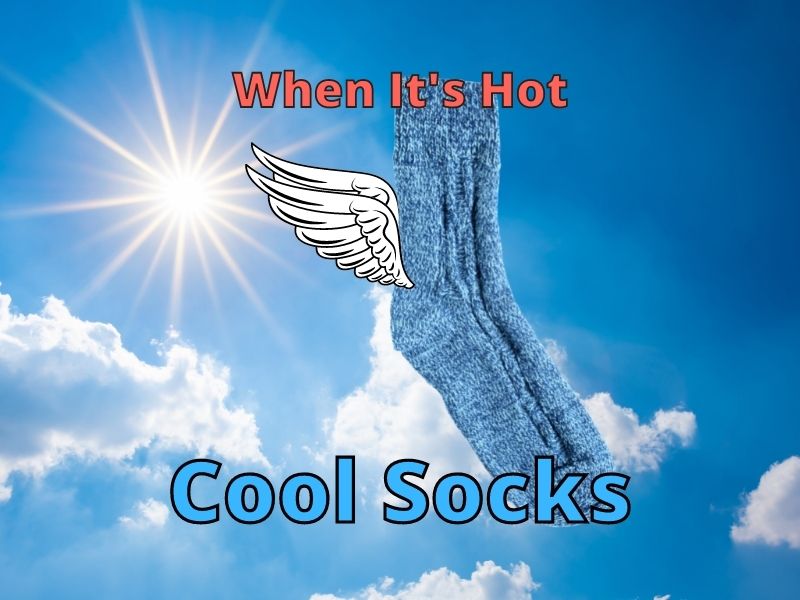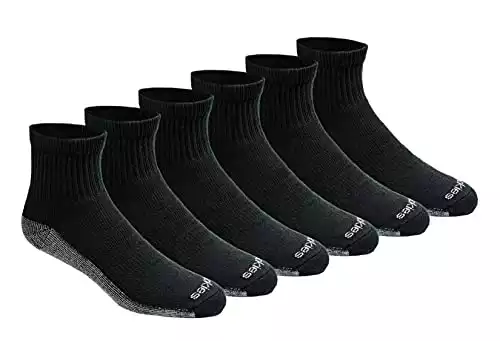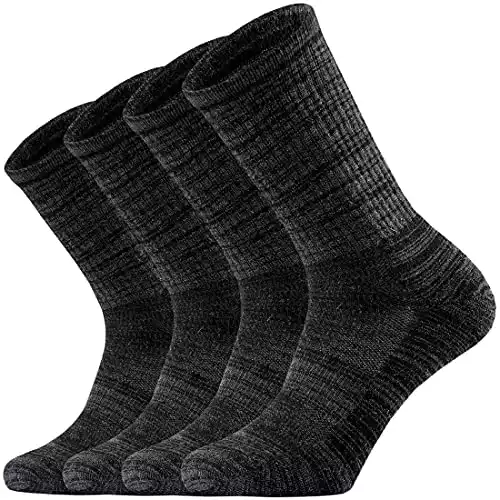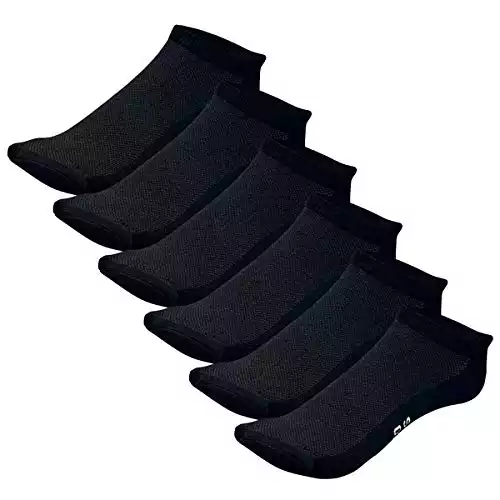Going to the beach? I usually wear sandals, shorts, and a comfortable shirt. Unfortunately, going to the beach isn’t always an option in hot weather. What socks should you wear when it’s hot?
In hot weather, it’s best to wear socks that breathe and wick moisture from your feet. Choose wool, bamboo, olefin/Drymax, Coolmax, flax, modal, mohair, polyester, angora, or nylon socks because of their wicking power.
Socks will keep your feet healthy, but keep in mind that moisture is possibly your biggest enemy. We’ll explore the different types of socks that are available that can help out when it’s hot out.
This chart is helpful for a quick reference to help you find cool socks in hot weather,
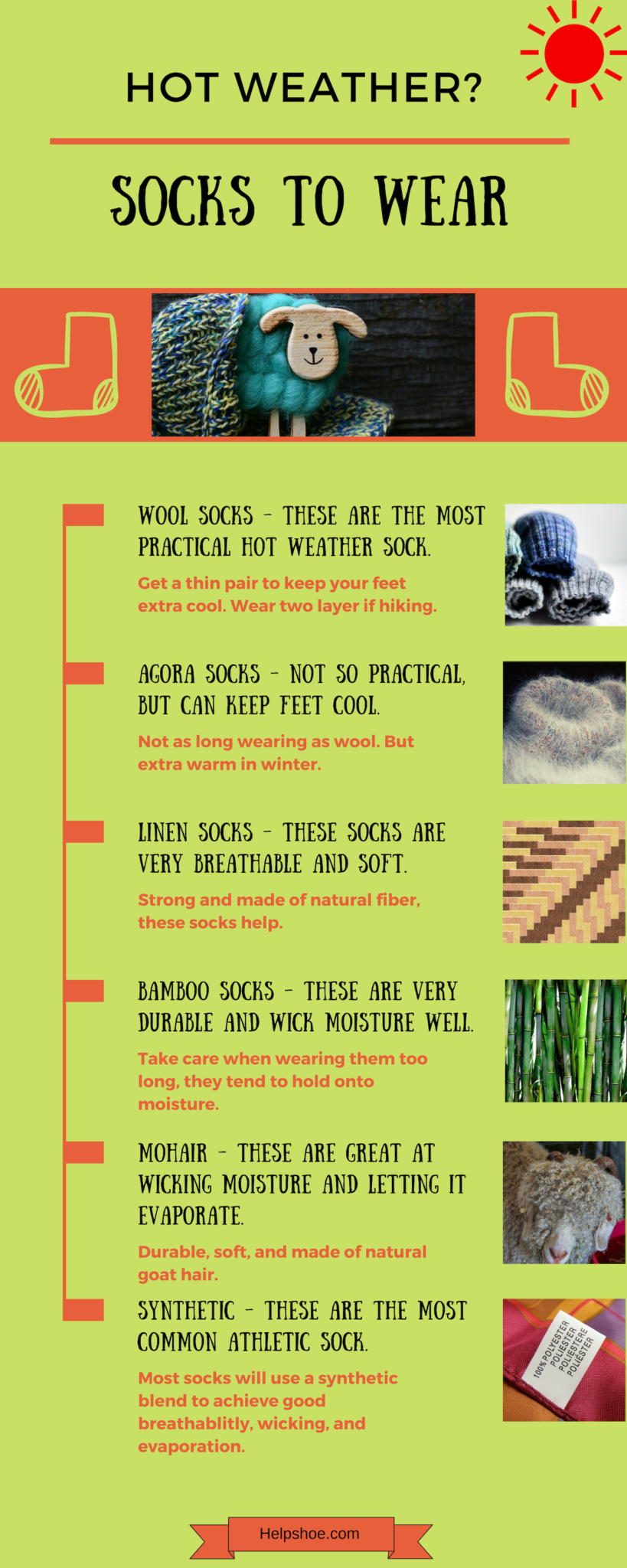
Socks That Work in Hot Weather
Socks and shoes can help with the dissipation of perspiration if they have enough breathability. Making sure you have adequate ventilation and moisture protection will help eliminate common problems with foot perspiration.
Socks will play a big role in helping your feet stay moisture-free. So, which socks are best for hot weather? So many choices. If I were to score socks based on their abilities, I would give them the following scores from 1-5. One being the lowest and five the highest score.
Also, keep in mind these scores aren’t anything close to perfect but can be used as a general guideline. Almost all socks are a blend of different materials.
Here is a list of some of the socks you can wear and how they handle hot situations that cause perspiration. Each sock handles wicking moisture, evaporation or drying, and breathability in different ways. Which is best for your needs?
→Natural Fiber Socks←
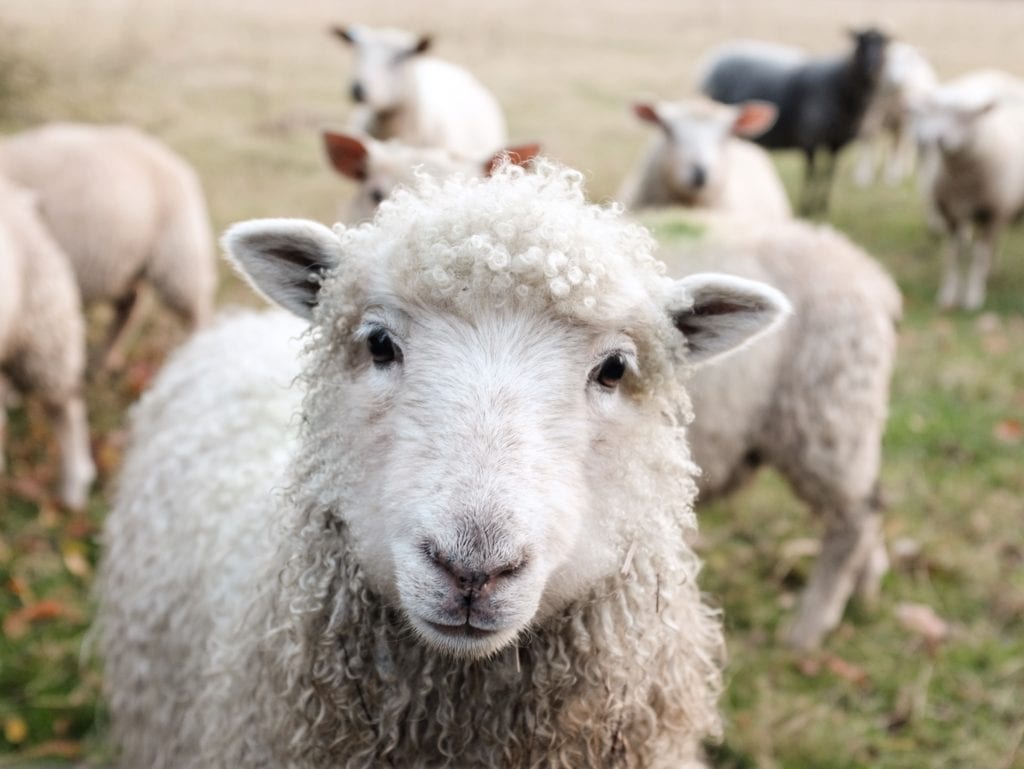
Cotton Socks – Score: 2.8
- Breathability Score 3-4 – They have a medium amount of ability to breathe. Thicker socks will breathe less but provide more cushion and warmth.
- Wicking Score 3 -4 – They can wick away a medium amount of moisture from the skin.
- Evaporation Score 1- 2 – They are not very good at letting go of moisture and can start to cause issues with your feet and shoes when being worn too long in hot conditions.
Other Things To Consider with Cotton
- Soft – Depending on how the socks are designed, cotton can be extremely soft.
- Hypoallergenic –They are good for sensitive feet.
- Environmentally Friendly – They are made of natural fiber, so they are good for the environment.
Bamboo Socks – Score: 4.0
- Breathability Score 4 – They have a good amount of breathability.
- Wicking Score 5 – They can wick away a great amount of moisture from the skin. It can hold 3 times its weight in water.
- Evaporation Score 3 – They are average at letting go of moisture but usually will not cause any foot issues.
Other Things To Consider with Bamboo
- Very Soft – they can feel softer than cotton. They can feel almost like silk.
- Hypoallergenic – They are good for sensitive feet.
- Environmentally Friendly – They are made of natural fiber, so they are good for the environment.
- Antibacterial – No smell or bacteria to worry about. If you have a bamboo blend sock, then the other fabric may not have this quality.
Angora Socks – Score: 5.0
- Breathability Score 5 – They have a great amount of breathability.
- Wicking Score 5 – They can wick away a great amount of moisture from the skin. They are usually combined with other materials.
- Evaporation Score 5 – They are great at letting go of moisture.
Other Things To Consider with Angora
- Very Soft – They feel extremely soft and are light.
- Hypoallergenic – They are good for sensitive feet and are antibacterial.
- Environmentally Friendly – They are made of natural fiber, so they are good for the environment.
- Warmest, Not Strongest – Angora socks can keep you 8x warmer than wool because the fibers are light and hollow and trap air. Sometimes they get too warm. Can shed, mat, and have poor elasticity. Best for winter.
Wool Socks – Score: 4.5
- Breathability Score 4 – They have a good amount of breathability.
- Wicking Score 5 – They can wick away a great amount of moisture from the skin. Sheep use it to keep warm and healthy.
- Evaporation Score 4-5 – They are great at letting go of moisture.
Other Things To Consider with Wool
- Soft – They can feel soft but may need to be treated at times to make them less coarse.
- Hypoallergenic – Generally accepted as good for sensitive feet.
- Environmentally Friendly – They are made of natural fiber, so they are good for the environment.
- Warm and Cool – Because they wick so well, your skin stays dry and can feel cool, even in hot weather. Wool socks will keep you warm when it’s cold by using air pockets that insolate, even if the sock is wet.
Flax / Linen Socks – Score: 4.2
- Breathability Score 5 – They have a great amount of breathability.
- Wicking Score 3-4 – They are good at absorbing moisture, but they may not always wick moisture away from the skin.
- Evaporation Score 4 – They are good at letting go of moisture, better than cotton.
Other Things To Consider with Flax
- Very Soft – They feel soft and are stronger than cotton.
- Hypoallergenic –They are good for sensitive feet.
- Environmentally Friendly – They are made of natural fiber, so they are good for the environment.
- Ancient – Used for thousands of years and prized for keeping people cool in hot weather. Used to wrap mummies thousands of years ago and still survived.
Mohair – Score: 4.5
- Breathability Score 4 – They have a good amount of breathability.
- Wicking Score 5 – They are great at wicking away moisture from the skin.
- Evaporation Score 4-5 – They are great at letting go of moisture.
Other Things To Consider with Mohair
- Very Soft – They feel softer than wool because they don’t have scales that irritate the skin as some wool does.
- Hypoallergenic –They are good for sensitive feet.
- Environmentally Friendly – They are made of natural fiber, so they are good for the environment.
- Durable and Warm – Angora goat hair is used to make these socks. It is very durable, resilient, and 8x warmer than wool.
→Semi-Natural Material Socks←
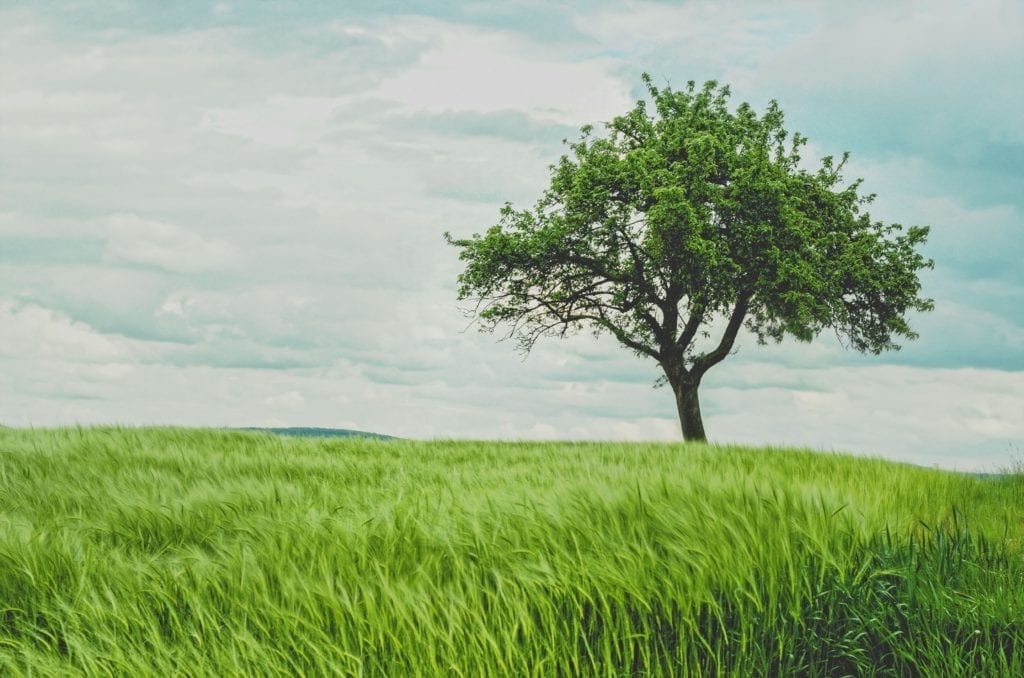
Modal Socks – Score: 4.5
- Breathability Score 4 – They have a good amount of breathability.
- Wicking Score 5 – They are great at wicking away moisture.
- Evaporation Score 4-5 – They are good at letting go of moisture, better than cotton.
Other Things To Consider with Model
- Very Soft – They feel softer than cotton.
- Hypoallergenic -They are good for sensitive feet.
- Environmentally Friendly? – They are made of natural fiber but processed chemically.
- Durable– The fibers are durable and made sustainably from beechwood trees.
→Man Made Material Socks←

Nylon Socks – Score: 4.0
- Breathability Score 4 – They have a good amount of breathability.
- Wicking Score 4 – They can wick away a good amount of moisture from the skin.
- Evaporation Score 4 – They are good at letting go of moisture until they are wet and then hold on to it. (Depends on how the fabric is designed as well.)
Other Things To Consider with Nylon
- Very Soft – Softer than polyester, it’s sometimes described as feeling silky.
- Hypoallergenic – They are good for sensitive feet.
- Not Environmentally Friendly – They are made of man-made materials.
- Durable– This fabric tends to be durable and water resistant.
Drymax / Olefin Socks – Score: 4.3
- Breathability Score 4 – They have a good amount of breathability. They are usually combined with other materials.
- Wicking Score 4 – It is water-phobic, which makes it good for the inside layer of socks that have an outer wicking layer.
- Evaporation Score 5 – They are good at letting go of moisture and dry quickly.
Other Things To Consider with Olefin
- Very Soft – Softer than polyester, it’s sometimes described as feeling silky.
- Hypoallergenic – They are good for sensitive feet.
- Not Environmentally Friendly – They are made of man-made materials.
- Durable– Olefin is abrasion and stain-resistant.
Coolmax Socks – Score: 4.2
- Breathability Score 4 – They have a good amount of breathability. They are usually combined with other materials.
- Wicking Score 4 – It is somewhat water-phobic but can wick and use capillary action.
- Evaporation Score 4-5 – They are good at letting go of moisture and dry quickly
Other Things To Consider with Coolmax
- Soft – Feels soft.
- Hypoallergenic –They are good for sensitive feet.
- Not Environmentally Friendly – They are made of man-made polyester.
- Durable– They are durable and resist shrinking.
Polyester Socks – Score: 4.2
- Breathability Score 4 – They have a good amount of breathability. They are usually combined with other materials.
- Wicking Score 4 – It is somewhat water-phobic but can wick away moisture.
- Evaporation Score 4-5 – They are good at letting go of moisture and dry quickly.
Other Things To Consider with Polyester
- Very Soft -Feels soft.
- Hypoallergenic – They are good for sensitive feet.
- Not Environmentally Friendly – They are made of man-made polyester.
- Durable– They are very strong. Abrasion resistant.
[See My Five Picks for Summer Socks At the End of the Post]
How to Treat Common Problems from Sweaty Feet?
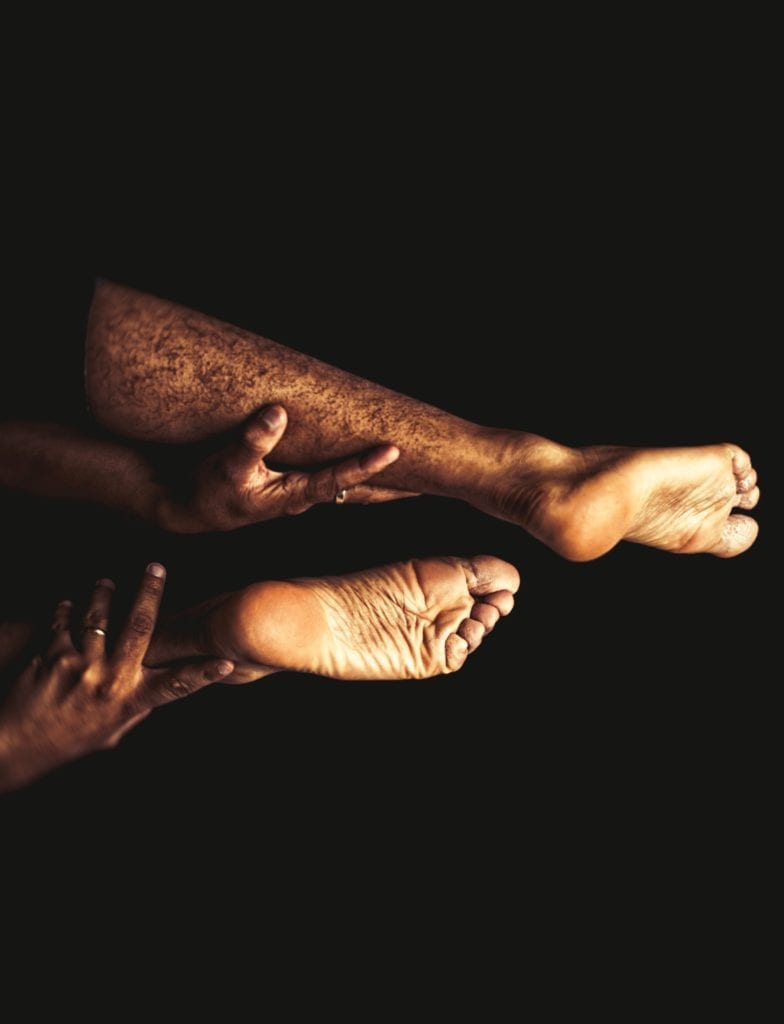
You may have good socks but still get moist feet. If you do get moist feet, you may develop common foot issues.
During hot weather, the body needs to perspire. Feet will start to accumulate moisture if it doesn’t have a place to go.
Problem: Rubbing is a common problem with moisture. Rubbing between the toes and other areas of the foot occurs when walking or running. This can lead to sores and callouses.
Solution: Bring an extra pair of socks or shoes with you. Buying good-wicking socks can help your feet stay dry.
Problem: Athlete’s foot is caused by moisture, and bacterial build-up can occur.
Solution: Wash your feet daily. Wash socks thoroughly in hot water. You may want to wash your shoes, but you shouldn’t dry them in the dryer. Another solution for shoes is to use a shoe spray for odor and bacteria.
To prevent moisture, use a moisture-absorbing charcoal bag. Use a powder to help keep your feet dry, such as corn starch, antifungal powder, or foot powder.
Socks for Sports, Exercise, and Hiking

When exercising, your feet will tend to perspire, and keeping them dry is important.
When at the gym, your best bet is to go with a light, breathable sock. Nylon, polyester, and Cotton can even be okay but might start to stink.
Most likely, you’ll want odor-free socks like bamboo, thin wool, Drymax, or Coolmax, or socks with added material for a smell-free foot, sock, and shoe.
These socks will also wick moisture to keep your feet dry, so you’ll have healthier feet.
If you are hiking, don’t forget your sock liner. You’ll need one to prevent the rubbing that normally occurs with hiking. Try a sock liner that is also good at wicking and releasing moisture, like wool.
Keep in mind that most synthetic socks will be more durable than natural fibers, but if they get too moist, they will start to smell bad.
I like bamboo socks when I exercise or go running. They are so comfortable and keep my feet dry. They seem to wash and dry well, making them last longer than the cotton socks I used to wear. They are pricier, but I think they are worth it.
My Picks for Summer Socks
| Product Image | Product Name / Price | Primary Button |
|---|---|---|
Thanks for visiting Helpshoe.com
Related Questions
→When should I replace my socks?
Socks have varying lifespans. Look to see if there is any excessive wear or thinning. If they are not covering the entire foot or thinning excessively, it’s time to replace them for your foot’s health and comfort.
→How many socks should I buy for exercise?
For each day you exercise, buy one pair of socks. Then buy one extra so you can use it if something happens to one pair. If you do laundry on Saturdays and exercise 5 days a week, get 6 pairs of socks.

